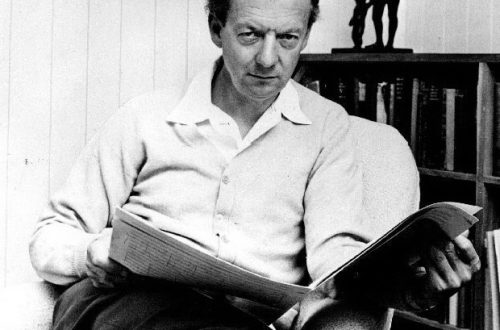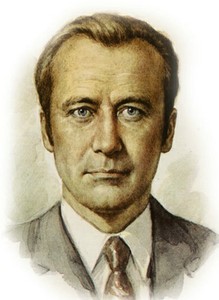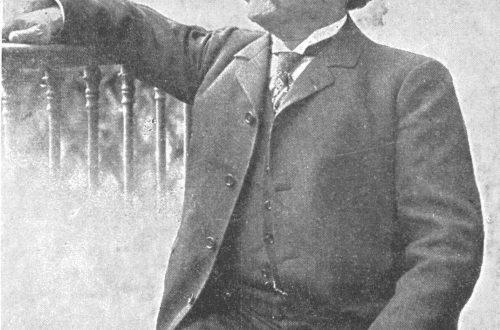
Domenico Scarlatti |
Domenico Scarlatti
… Joking and playing, in his frantic rhythms and puzzling jumps, he establishes new forms of art … K. Kuznetsov
Of the entire Scarlatti dynasty – one of the most prominent in musical history – Giuseppe Domenico, the son of Alessandro Scarlatti, the same age as J. S. Bach and G. F. Handel, gained the greatest fame. D. Scarlatti entered the annals of musical culture primarily as one of the founders of piano music, the creator of the virtuoso harpsichord style.
Scarlatti was born in Naples. He was a student of his father and prominent musician G. Hertz, and at the age of 16 he became an organist and composer of the Neapolitan Royal Chapel. But soon the father sends Domenico to Venice. A. Scarlatti explains the reasons for his decision in a letter to Duke Alessandro Medici: “I forced him to leave Naples, where there was enough space for his talent, but his talent was not for such a place. My son is an eagle whose wings have grown…” 4 years of studies with the most prominent Italian composer F. Gasparini, acquaintance and friendship with Handel, communication with the famous B. Marcello – all this could not but play a significant role in shaping Scarlatti’s musical talent.
If Venice in the life of the composer remained sometimes teaching and improvement, then in Rome, where he moved thanks to the patronage of Cardinal Ottoboni, the period of his creative maturity had already begun. Scarlatti’s circle of musical connections includes B. Pasquini and A. Corelli. He writes operas for the exiled Polish queen Maria Casimira; from 1714 he became a bandmaster at the Vatican, he created a lot of sacred music. By this time, the glory of Scarlatti the performer is being consolidated. According to the memoirs of the Irish organist Thomas Rosengrave, who contributed to the popularity of the musician in England, he never heard such passages and effects that surpassed any degree of perfection, “as if there were a thousand devils behind the instrument.” Scarlatti, a concert virtuoso harpsichordist, was known throughout Europe. Naples, Florence, Venice, Rome, London, Lisbon, Dublin, Madrid – this is only in the most general terms the geography of the musician’s rapid movements around the capitals of the world. The most influential European courts patronized the brilliant concert performer, crowned persons expressed their disposition. According to the memoirs of Farinelli, a friend of the composer, Scarlatti had many harpsichords made in various countries. The composer named each instrument after some famous Italian artist, according to the value he had for the musician. Scarlatti’s favorite harpsichord was named “Raphael of Urbino”.
In 1720, Scarlatti left Italy forever and went to Lisbon to the court of Infanta Maria Barbara as her teacher and bandmaster. In this service, he spent the entire second half of his life: subsequently, Maria Barbara became the Spanish queen (1729) and Scarlatti followed her to Spain. Here he communicated with the composer A. Soler, through whose work the influence of Scarlatti affected the Spanish clavier art.
Of the composer’s extensive legacy (20 operas, ca. 20 oratorios and cantatas, 12 instrumental concertos, masses, 2 “Miserere”, “Stabat mater”) clavier works have retained a lively artistic value. It was in them that the genius of Scarlatti manifested itself with true fullness. The most complete collection of his one-movement sonatas contains 555 compositions. The composer himself called them exercises and wrote in the preface to his lifetime edition: “Do not wait – whether you are an amateur or a professional – in these works of a deep plan; take them as a sport to accustom yourself to the technique of the harpsichord.” These bravura and witty works are full of enthusiasm, brilliance and invention. They evoke associations with the images of opera-buffa. Much here is from the contemporary Italian violin style, and from folk dance music, not only Italian, but also Spanish and Portuguese. The folk principle is peculiarly combined in them with the gloss of aristocracy; improvisation – with prototypes of the sonata form. Specifically clavier virtuosity was completely new: playing registers, crossing hands, huge leaps, broken chords, passages with double notes. The music of Domenico Scarlatti suffered a difficult fate. Soon after the composer’s death, she was forgotten; manuscripts of essays ended up in various libraries and archives; the operatic scores are almost all irretrievably lost. In the XNUMXth century interest in the personality and work of Scarlatti began to revive. Much of his heritage was discovered and published, became known to the general public and entered the golden fund of world musical culture.
I. Vetlitsyna





